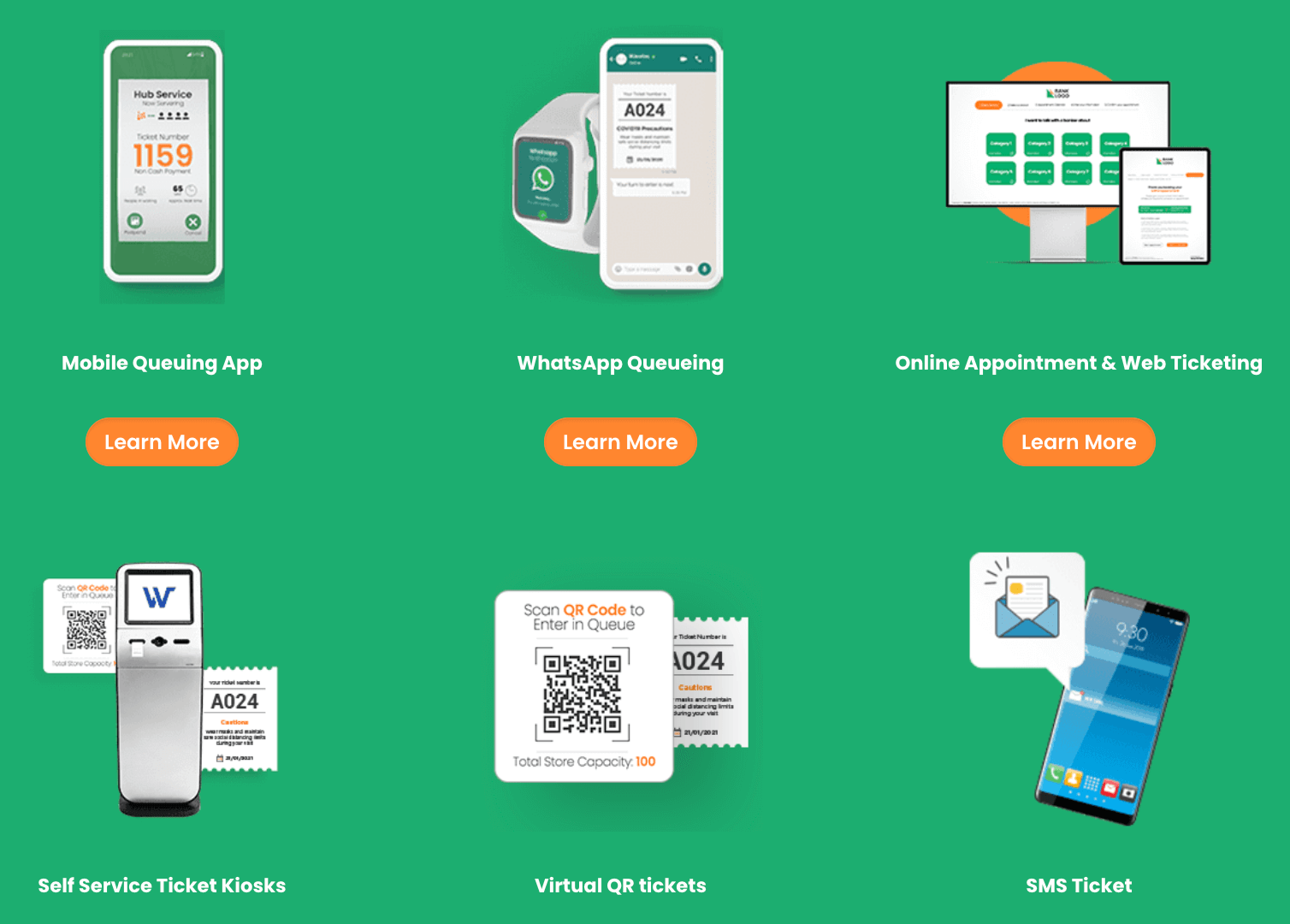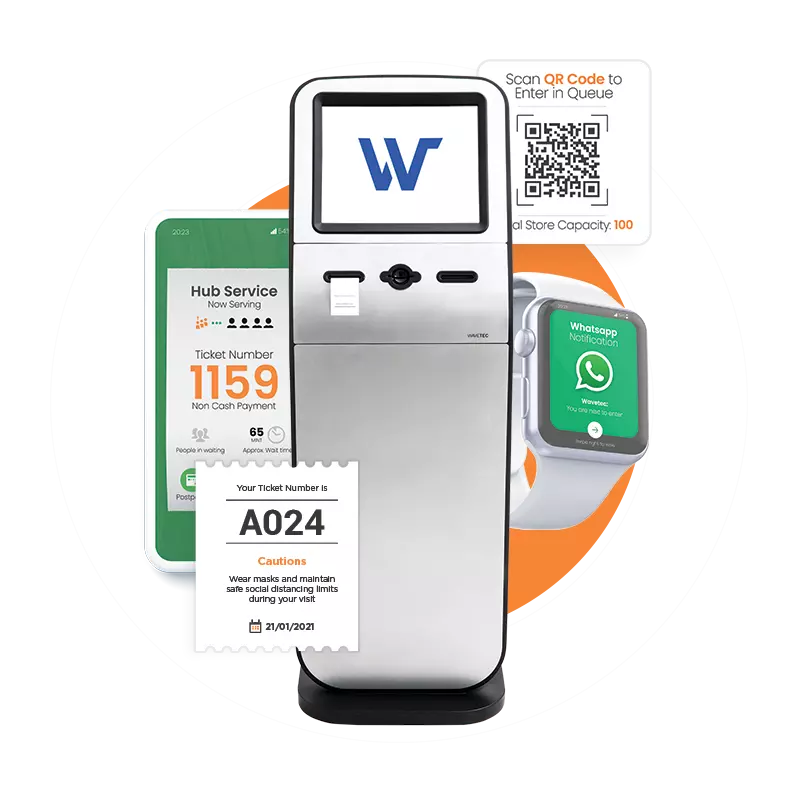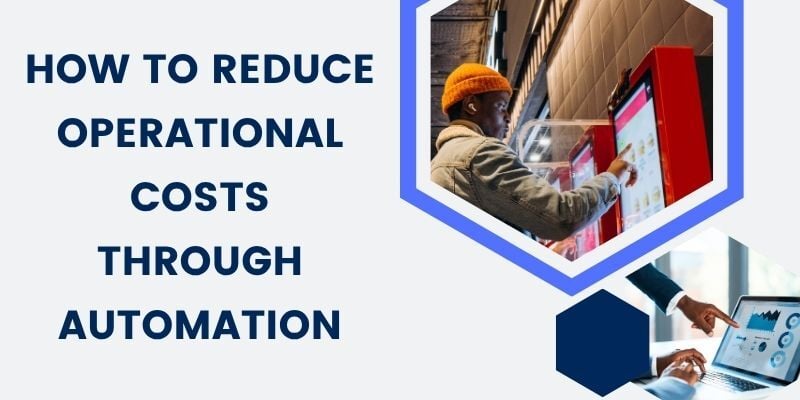Will businesses embracing digitization in daily practices be able to keep up with evolving customer expectations?
The growing customer expectations have made digital transformation a necessity in the business world. Companies that have not invested in digitizing the customer experience find it difficult to maintain a loyal and returning customer base.
- Let’s look at some numbers to understand the revolutionary role of digital technologies in the business era:
-
- According to Statista, the spending on digital transformation in 2022 was 1.6 trillion U.S. dollars. By 2026, global digital transformation spending is forecasted to hit 3.4 trillion U.S. dollars.
- By the end of 2022, Gartner predicted that 70% of customer interactions will involve machine learning applications, chatbots, and mobile messaging. This is a 55% increase from 2018.
- BusinessWire reported that 86% of customers would quit connecting with a brand they like after one poor experience.
We see high customer engagement rates with social media platforms. This leaves businesses with little to no choice but to keep the digitizing momentum going.
For this purpose, organizations have invested in simple digital transformation strategies which repurpose existing traditional infrastructure and cloud extensions.
Digitizing routine tasks, which otherwise would consume time and result in errors, has been the highlight for small and large-scale businesses. Retail, hospitality, healthcare, and banking industries have benefitted the most by introducing digital solutions.
A report by Forbes concluded that experience-led companies have 1.6 times higher customer satisfaction rates and 1.9 times higher average order value.
If your company’s business model relies on customer satisfaction and word-of-mouth marketing, now is a good time to invest in digitizing the customer experience!
In this blog, you will learn the following about digitization in business practices:
-
- What is digital customer experience
- The Connection between Digital Transformation and Customer Experience
Keep reading to learn more!
What is Digital Customer Experience?

A digital customer experience refers to customers’ interactions and engagements with a business through digital channels. This can be carried out on websites, mobile apps, social media, or online platforms.
Digitizing the customer experiences encompasses everything from browsing products, making purchases, and seeking support to providing feedback. It enables businesses to meet the evolving needs and preferences of tech-savvy customers who expect seamless interactions.
With digitization, data analytics gives you a data-driven approach to learning about customer behavior and patterns. Given the higher accuracy of digital services, you can automate processes to minimize manual errors.
Customers expect frictionless interactions and consistent experiences across online and offline channels. By staying ahead of the digital curve, companies can differentiate themselves, attract new customers, and retain existing ones.
So what is the best approach to digitizing the customer experience?
How to Digitize the Customer Experience
Digital transformation is a gradual process that takes time to fully integrate into a business model. We discuss a step-by-step approach you can adopt for the digitization of customer experience.
1. Conducting a Customer Journey Analysis
Digital transformation and customer experience are closely interconnected. Digital transformation introduces technology to improve business processes and enhance the customer experience, with a focus on the digital transformation of the customer journey.
The best way of digitizing customer experience is to understand the customer journey. You can start by conducting a customer journey analysis.
This is crucial because it allows businesses to gain insights into the customer experience, from the initial touchpoint to the final interaction, through digital transformation in customer experience.
Think of it as a customer journey map, with each step outlining pain points, bottlenecks, or areas where customers face challenges and frustrations. This analysis helps uncover improvement opportunities and ensures digital transformation efforts align with customer expectations.
A customer journey can be interactions such as browsing a website, purchasing, contacting customer support, or leaving feedback.
Once the stages are identified, gathering data on customer interactions at each touchpoint is important. Data can be collected through website analytics, customer surveys, feedback forms, and social media monitoring.
These sources provide valuable information on customer behavior and satisfaction levels.
Quantitative data provides insights into conversion rates, bounce rates, and time spent on different touchpoints. Qualitative data offers valuable customer feedback, providing a deeper understanding of their emotions and motivations.
Businesses can completely view the customer journey by combining quantitative and qualitative data. Thus, the first step of digitizing determines the solutions you will extend to your customers.
2. Adopting a Customer-Centric Mindset
The connection between digital transformation and customer experience is undeniable. If you do not have your customers as the basis of the business model, will your investments be fruitful?
With competition beaming in the digital world, you have to prioritize customer needs and preferences to adopt a customer-centric mindset. This involves a thorough customer journey analysis, gathering customer feedback, and studying customer behavior data.
Learn what would make customers’ digital interactions more enjoyable and convenient. This way, you can tailor digital transformation strategies to meet customer expectations.
Another way to prioritize customers’ ease is by providing an omnichannel experience. Nowadays, customers expect to interact with a brand across various digital touchpoints, such as social media, chatbots, or online marketplaces.
These channels ensure consistency and continuity throughout the customer journey.
Proactive customer support is crucial in a customer-centric digital transformation. Implementing chatbots or AI-powered virtual assistants can provide instant responses and resolve simple inquiries.
This frees up time for the staff members and allows them to focus on more complex issues.
While extending digital transformation initiatives, companies should continuously measure and monitor the impact. This can be done by simply racking metrics like customer satisfaction, retention rates, and lifetime value.
3. Enhancing Digital Channels and Touchpoints

When it comes to improving the customer experience, businesses have a wide array of digital channels and touchpoints to evaluate. Up next, we discuss a few examples that you can use to enhance your customer’s experience.
A customer’s first impression of your branch is formed when they visit it. Customers can be met with chaos resulting from mismanaged queues and long wait times. At this point, the customer decides to wait or visit your competitor.
To improve this situation, you can introduce Queue Management Systems, which can revolutionize the waiting experience.
This allows customers to join a queue remotely and receive real-time updates on their position. Businesses can use this to organize, measure and enhance wait times and manage expectations.
Another digital solution is giving your customers an opportunity to reserve a spot with Virtual Queueing Solutions. With this, customers can take control of their waiting pre-arrival and upon arrival.
Give your customers check-in options and greeting options to mitigate queuing anxiety.
How about allowing your customers to reserve queueing spots and appointment scheduling on platforms like WhatsApp? WhatsApp Queuing Solutions enables customers to book appointments via WhatsApp. Businesses can provide a QR-enabled channel for scheduling services.
Another aspect to consider is People Counting, which involves monitoring and managing footfall in physical locations. Implementing people-counting solutions allows you to gather insights into customer traffic patterns.
Understand peak times and customer flow to optimize staffing and offer an efficient in-store experience.
While there are many options to introduce as part of digitizing customer experience, putting yourself in the customers’ shoes and designing a user-friendly design is essential. Optimize mobile apps for performance, engaging content, and personalization.
Other digital channels like email marketing allow businesses to reach customers directly. Social media platforms provide an opportunity to connect and engage with customers more informally.
Remember, your aim is fostering meaningful interactions and building brand loyalty.
4. Personalization and Customization
When it comes to digitizing the customer experience, personalization and customization play a vital role. These elements are key to creating a tailored customer experience beyond a one-size-fits-all approach.
Personalization and customization are about treating customers as individuals with distinct preferences. Look to build deeper connections with customers when you provide enhanced engagement.
Customers feel valued when they receive relevant recommendations, targeted offers, and personalized interactions.
Customer Relationship Management (CRM) systems allow companies to gather and analyze customer data. This gives a thorough understanding of customers’ preferences and purchase history.
Another technology that enables personalization is machine learning. By employing algorithms and predictive analytics, businesses can anticipate customer preferences and provide recommendations based on past behavior.
For example, as an e-commerce platform, you can suggest grocery products based on the customer’s browsing and purchase history for an immersive shopping experience.
Personalization can also be achieved through dynamic content. Websites and mobile apps can adapt content based on user location or demographics. This ensures customers see offers and relevant promotions that align with their interests and geographic location.
We know companies like Amazon that have implemented successful personalization strategies. Machine learning algorithms suggest movies, shows, or products based on a user’s viewing history. This strategy adds to conversion rates and boosts sales.
Take the opportunity to create personalized marketing campaigns and offers that resonate with customers. Show your customers you care about them to build a family of returning customers.
The benefits of digital payments extend beyond the realm of mere transactions. With personalization and customization, digital payments offer tailored rewards, a seamless checkout experience, enhanced security, personalized financial management, and convenient integration with other services. As more individuals embrace digital payments, these benefits will continue to evolve, delivering even greater value and convenience to users.
5. Leveraging Data and Analytics
As discussed earlier, businesses can benefit from thoroughly collecting, analyzing, and leveraging customer data. Use advanced data collection methods like online surveys, website tracking, and social media listening to get to know your customers’ expectations.
Customer feedback collected through surveys or social media monitoring can uncover specific pain points or areas where improvements are needed. Businesses can use this data to build websites, mobile apps, or online platforms which are customer-centric.
When it comes to customer data analytics, there are several types of data to collect and various analytics tools to consider:
-
- Demographic data: Collecting information about customers’ age, gender, location, and other demographic factors provides a foundation for understanding the target audience.
- Behavioral data: Tracking customer interactions, such as clicks, browsing history, purchase history, and time spent on specific pages, helps identify patterns and preferences.
- Sentiment analysis: Analyzing customer feedback, reviews, and social media posts allows businesses to gauge sentiment and identify areas for improvement.
- Customer journey mapping: Mapping out the end-to-end customer journey helps identify pain points, touchpoints, and opportunities for enhancing the experience at each stage.
Some of the best web analytics tools include Google Analytics which gives insights into website traffic, user behavior, and conversion rates.
You can use customer feedback platforms like Customer Feedback Solutions to analyze feedback through surveys or Net Promoter Score (NPS) assessments.
6. Implementing Omni-Channel Integration

We have many conversational channels and social media platforms to engage with daily. If you want customers to engage with your business, provide seamless integration across different channels and touchpoints.
Customers expect a smooth transition when interacting with a brand through a website, mobile app, social media, or in person. Businesses can ensure a unified experience that eliminates delays and creates a seamless journey.
One of the key benefits of adopting an omnichannel approach is that it enhances the customer experience. Customers can effortlessly switch between channels while maintaining context and continuity, which creates convenience and flexibility.
For instance, a customer might browse products on a website, add items to their cart, and later receive personalized recommendations through email.
The previous interactions and purchase history are readily available when they contact customer support, allowing for efficient resolution.
Therefore, integrating data, communication, and customer support across channels is as essential for a successful omnichannel strategy as effective communication.
Ensure that customers can communicate with the brand across chatbots, live chat, social media messaging, or phone support.
Synchronizing conversations across channels helps maintain consistency and prevents customers from repeating information. This way, you can empower support teams to provide swift and accurate assistance, regardless of the channel customers choose.
7. Investing in Automation and AI
Digital transformation and customer experience go hand in hand, as the former plays a pivotal role in shaping the latter. AI technologies offer the potential for businesses to improve efficiency by automating repetitive tasks to save time.
By automating routine tasks, businesses can free up valuable staff resources to focus on more complex and personalized customer interactions. This can be such as appointment scheduling and check-ins.
For example, Take a Number Machine eliminates human errors and speeds up the process of ticketing via a self-service kiosk.
AI-powered chatbots are another excellent example of handling customer queries to provide instant round-the-clock responses. Chatbots can make personalized recommendations based on customer preferences.
8. Ensuring Security and Trust
It goes without saying that new technologies leave customers worrying about data breaches and security. This makes protecting customers’ information of utmost importance in the digital landscape.
Customers entrust businesses with their personal information, financial details, and sensitive data. Any breach of security can not only damage a company’s reputation but may lead to financial losses and legal repercussions.
Implementing robust security measures is crucial to safeguard customer data. Here are some tips to ensure the security and trust of your customers:
-
- Encrypt sensitive customer information at rest and in transit. This ensures that even if data is compromised, it remains unreadable to unauthorized individuals.
- Implement strong authentication protocols, such as multi-factor authentication, to protect customer accounts from unauthorized access. This adds an extra layer of security by requiring users to provide multiple pieces of evidence to verify their identity.
- Conduct regular security audits to identify vulnerabilities and address them promptly.
- Clearly communicate your privacy policy to customers, outlining how their data will be used, stored, and protected. Obtain explicit consent for data collection and ensure transparency in data practices.
- Train your employees to recognize phishing attempts, protect passwords, and handle customer data securely.
Regardless of the security measure, you should have a robust plan to handle security incidents or breaches effectively. This includes clear communication channels, predefined roles and responsibilities, and a process for notifying and supporting affected customers.
Such regulated security measures help businesses gain the trust and confidence of their customers. This trust, in turn, translates into a positive customer experience, as customers feel safe interacting with your digital platforms.
9. Continuous Improvement and Feedback
What is the best way to know about the change digital transformation brings to your business?
Customer feedback helps businesses tap into the refinement of digital experiences. By actively seeking and listening to customer feedback, companies can identify areas for improvement and make informed decisions, especially by digitizing the consumer decision journey.
So, how can businesses collect and utilize customer feedback effectively?
The most common way is to use feedback forms on websites such as Customer Feedback Solutions to gather customer input.
These surveys can cover various aspects of the digital customer experience, such as website usability, checkout process, or customer support responsiveness.
Social media platforms monitoring mentions, comments, and direct messages can provide real-time feedback on customer experiences and sentiments. Additionally, online review platforms and forums can offer valuable feedback businesses can use to identify trends.
However, collecting feedback is just the first step. To truly utilize customer insights, businesses must analyze and act upon them. This means actively listening to customer feedback, identifying recurring themes or pain points, and prioritizing areas that require attention.
Implementing changes based on customer feedback shows that a company values its customers’ opinions and is committed to delivering an exceptional digital experience.
We recommend you communicate with customers about the changes made based on their feedback. Letting them know that their input was heard and acted upon builds trust and encourages ongoing engagement.
Frequently Asked Questions
How can I identify areas in the customer journey that need improvement?
Start by conducting surveys and analyzing customer feedback to track customer behavior. This helps build a customer journey map with pain points or touchpoints that require attention.
What are some effective strategies for enhancing digital channels?
Of the many digital solutions that you can offer, personalize the customer journey based on data-driven insights and implement omnichannel integration.
How can personalization benefit the customer experience?
With personalization, you can have tailored interactions and deliver relevant content, recommendations, and offers.
What are the 5 stages of the digital customer journey?
The five stages are:
- Awareness: The customer learns about the brand.
- Consideration: They evaluate products and compare them with competitors.
- Purchase: The customer completes a transaction.
- Retention: Post-purchase engagement encourages repeat business.
- Advocacy: Satisfied customers recommend the brand to others.
What are the digital experience channels?
The leading digital experience channels include:
- Websites: Customers browse, purchase, and get support.
- Mobile Apps: Enable on-the-go interactions and personalized experiences.
- Social Media: Engages customers and handles service.
- Chatbots/AI: Provide instant responses and guide interactions.
Conclusion
In today’s competitive marketplace, digitizing the customer experience is no longer an option—it’s a necessity. By investing in modern digital tools, businesses can increase customer loyalty, expand their revenue, decrease support costs, and improve their brand reputation.
Whether through personalized shopping experiences, AI-powered support, or seamless omnichannel strategies, digitization helps companies meet rising customer expectations while staying competitive.
Companies that adopt digitization can offer faster, more personalized, and more efficient experiences, ultimately driving business growth and securing a loyal customer base.
BOOK A FREE DEMO






